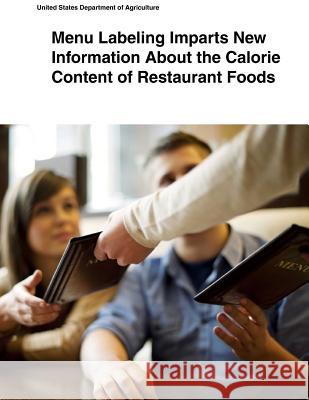Menu Labeling Imparts New Information About the Calorie Content of Restaurant Foods » książka
Menu Labeling Imparts New Information About the Calorie Content of Restaurant Foods
ISBN-13: 9781505433876 / Angielski / Miękka / 2014 / 36 str.
Menu Labeling Imparts New Information About the Calorie Content of Restaurant Foods
ISBN-13: 9781505433876 / Angielski / Miękka / 2014 / 36 str.
(netto: 65,14 VAT: 5%)
Najniższa cena z 30 dni: 68,02 zł
ok. 16-18 dni roboczych
Bez gwarancji dostawy przed świętami
Darmowa dostawa!
Restaurant foods are typically higher in calories than meals consumed at home. Menu labeling regulations by the U.S. Food and Drug and Administration aim to inform consumers about the calorie content of menu items. However, some consumers may already be making at least partially informed decisions. For example, as a rule of thumb, a consumer may be aware that deep-fried foods are higher in calories. He or she may also know to avoid side dishes like French fries and onion rings. Indeed, it has been argued that some consumers can already iden-tify which foods best satisfy their needs and wants and gain little new information from menu labeling. In this study, following research in marketing science and behavioral economics, we assume that a representative consumer employs rules-of-thumb nutrition knowledge to judge the calorie content of restaurant foods when explicit information is unavailable. We then investi-gate whether rules of thumb accurately predict the calorie content of 361 meals sold by 2 major fast-food restaurants and 5,752 meals sold by 5 major full-service restaurants. Results show that some simple rules of thumb are fairly reliable predictors of actual calorie content. They and other information available at the point of sale also explain about half of the total variation in calories in restaurant foods. Nonetheless, we find that menu labeling still imparts substan-tial new information. In particular, it is likely that many Americans are already able to make crude choices between high- and low-calorie foods, based on their pre-existing understandings of nutrition. Menu labeling allows them to make finer adjustments in their food choices and behavior, if they wish to.
Zawartość książki może nie spełniać oczekiwań – reklamacje nie obejmują treści, która mogła nie być redakcyjnie ani merytorycznie opracowana.











